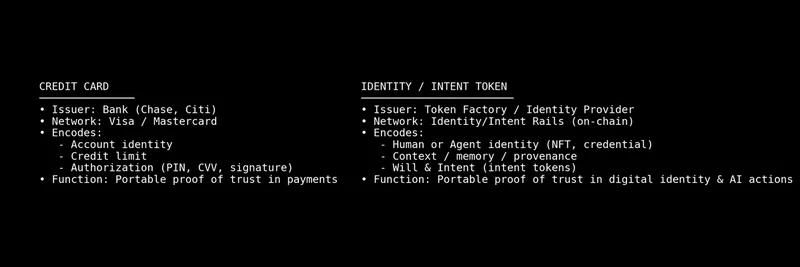In the fast-paced world of blockchain and meme tokens, innovative ideas often emerge from unexpected analogies. A recent tweet from Altcoinist.com has sparked conversations in the crypto community by comparing traditional credit cards to emerging identity and intent tokens, positioning $TIBBIR as a frontrunner in this new fintech era. Let's break it down and see what this means for meme token enthusiasts and blockchain practitioners.
Unpacking the Tweet: $TIBBIR as the New Fintech
The tweet highlights the massive $1.789 trillion credit card market in 2024 and draws a direct parallel to $TIBBIR's vision under Ribbita. Just as Visa revolutionized payments by making them portable, Ribbita aims to do the same for identity, intent, and context in the digital realm. Here's the key takeaway: credit card infrastructure is being reimagined on blockchain rails.
For those new to the space, meme tokens like $TIBBIR aren't just about viral hype—they often embed real utility. $TIBBIR, a frog-themed meme token on the Base chain with a market cap hovering around $180-200 million (as per CoinGecko), is pushing boundaries by tokenizing elements of trust and action.
The tweet maps out equivalences like:
- Credit card rails equating to identity rails.
- Card issuers becoming token factories.
- Transaction metadata turning into tokenized context or memory.
- Signatures or CVVs mirroring intent tokens.
- Network trust evolving into decentralized identity trust.
This isn't just clever wordplay; it's a blueprint for how blockchain can enhance everyday digital interactions, especially with AI agents on the rise.
The Core Comparison: Credit Cards vs. Identity/Intent Tokens
To illustrate the point, the tweet includes a side-by-side breakdown that makes the concept crystal clear.
As shown, a credit card serves as a portable proof of trust for payments, encoding account details, credit limits, and authorization methods. In contrast, an identity/intent token acts as a portable proof of trust for digital identity and AI-driven actions. It encodes human or agent identity (often via NFTs or credentials), context/memory/provenance, and will & intent.
Think of it this way: Your credit card lets you prove you can pay without revealing your entire bank history. Similarly, an intent token could let an AI agent act on your behalf—say, booking a flight—while proving your identity and intentions without exposing unnecessary data. This is huge for privacy and efficiency in a world where AI handles more tasks.
Why This Matters for Meme Tokens and Blockchain
Meme tokens have evolved from pure speculation to vehicles for community-driven innovation. $TIBBIR exemplifies this by blending meme culture with practical fintech applications. Decentralized identity (DID) solves real problems like data breaches and fraud, which plague traditional systems. By making identity portable and on-chain, projects like Ribbita enable seamless interactions across platforms.
Intent tokens add another layer. In simple terms, these are cryptographic representations of a user's "intent" or desired outcome. For example, in DeFi (decentralized finance), an intent token could automate trades based on predefined conditions, reducing the need for constant manual input.
The tweet emphasizes that new fintech is "contextual, tokenized, machine-readable." This aligns perfectly with blockchain's strengths: immutability, transparency, and programmability. For blockchain practitioners, this means opportunities to build on $TIBBIR's ecosystem, perhaps creating dApps (decentralized applications) that leverage these tokens for AI-enhanced services.
Potential Impact and Future Outlook
With the credit card market as a benchmark, the potential for identity and intent tokens is enormous. Imagine a future where your digital wallet holds not just funds but verifiable proofs of identity and intent, usable across metaverses, DeFi protocols, and even real-world services.
Of course, challenges remain—regulatory hurdles, adoption barriers, and technical scalability. But meme tokens like $TIBBIR thrive on community momentum, and this visionary tweet could rally more supporters.
If you're intrigued, check out the original tweet for yourself and explore $TIBBIR on platforms like CoinMarketCap. As always, DYOR (do your own research) before diving in—this space moves fast!
Stay tuned to Meme Insider for more insights on how meme tokens are shaping the future of blockchain. What's your take on $TIBBIR's fintech pivot? Drop a comment below.


